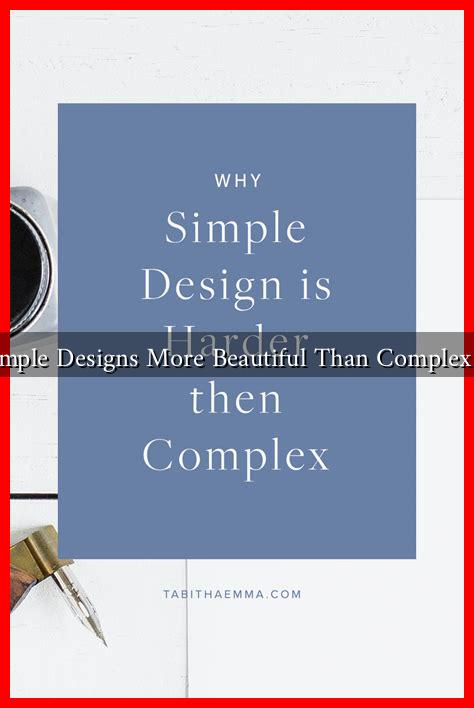-
Table of Contents
Are Simple Designs More Beautiful Than Complex Ones?
The debate over whether simple designs are more beautiful than complex ones has been a long-standing topic in the fields of art, architecture, and product design. While beauty is often subjective, there are compelling arguments and research that suggest simplicity can lead to greater aesthetic appeal. This article explores the principles of design, the psychology behind simplicity, and real-world examples that illustrate the beauty of simplicity versus complexity.
The Aesthetic Appeal of Simplicity
Simple designs often evoke a sense of clarity and elegance. The principle of simplicity in design is rooted in the idea that less is more. This concept can be traced back to the Bauhaus movement in the early 20th century, which emphasized functional and minimalist design. Here are some reasons why simple designs are often perceived as more beautiful:
- Clarity: Simple designs are easier to understand and appreciate. They communicate their message without unnecessary distractions.
- Timelessness: Simple designs tend to age better than complex ones. For example, the iconic Coca-Cola logo has remained largely unchanged since its inception, showcasing the power of simplicity.
- Focus: A simple design allows the viewer to focus on the essential elements, enhancing the overall experience.
The Psychology Behind Simplicity
Research in psychology supports the notion that simplicity can enhance beauty. A study published in the journal Cognition found that people tend to prefer simple shapes over complex ones. This preference is linked to cognitive fluency, which suggests that our brains process simple information more easily than complex information. When we encounter designs that are easy to understand, we experience a sense of pleasure and satisfaction.
Moreover, the mere exposure effect indicates that repeated exposure to simple designs can increase our liking for them. This phenomenon explains why brands often opt for minimalist logos and packaging—simplicity fosters familiarity and comfort.
Case Studies: Simplicity vs. Complexity
Several case studies illustrate the effectiveness of simple designs in various fields:
- Apple: The tech giant is renowned for its minimalist product designs. The iPhone, with its sleek lines and intuitive interface, exemplifies how simplicity can lead to user satisfaction and brand loyalty.
- Google: The search engine’s homepage is famously simple, featuring a clean layout that prioritizes functionality. This design choice has contributed to its status as the most popular search engine worldwide.
- Architecture: The Farnsworth House, designed by Ludwig Mies van der Rohe, is a prime example of minimalist architecture. Its simple form and open spaces create a harmonious relationship with nature, demonstrating that beauty can be found in simplicity.
The Case for Complexity
While simplicity has its merits, complexity can also be beautiful in its own right. Complex designs can convey depth, richness, and a sense of history. For instance:
- Baroque Architecture: The intricate details and elaborate ornamentation of Baroque buildings evoke a sense of grandeur and opulence.
- Renaissance Art: Artists like Michelangelo and Raphael employed complex compositions and rich color palettes to create masterpieces that are celebrated for their beauty.
- Fashion Design: High fashion often embraces complexity, with intricate patterns and textures that tell a story and evoke emotion.
Conclusion: Finding Balance in Design
In conclusion, the question of whether simple designs are more beautiful than complex ones does not have a definitive answer. Both simplicity and complexity have their unique appeals and can be beautiful in different contexts. Simple designs often excel in clarity and timelessness, while complex designs can convey richness and depth. Ultimately, the beauty of a design lies in its ability to communicate effectively and resonate with its audience. As designers, the challenge is to find the right balance between simplicity and complexity to create aesthetically pleasing and functional works.

